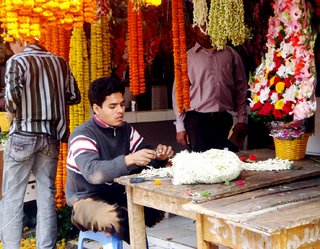




Old dilapidated mansions of Lalbagh


Lalbagian rooftop gathering
 Atiskhana lane |  Lalbagh road |

Killar mor - south west corner of Fort

Tomb (majar)

Nawabganj field

Historical Khan Mohammad Mridha Mosque

Unknown grave in the historical Mridha mosque


Bishnu Charan house on Lalbagh Road


Lalbagh Hindu cremation ghat in Kamrangir char


Rahmatullah High School - the first Urdu based school after partition

Inside view of Lalbagh Fort - Paribibi's tomb in the foreground
 Fort north east gate |  Date palm juice seller |

Kacchi biriani and Tehari deck in local restaurant

Mechanical shop

Katabon pet animal market

Katabon flower shop

Katabon traffic
Lalbagh Area: The old city of Dhaka was small centering round Babubazar area, but on becoming the capital of the Mughal Subah the city was extended along the bank of the Buriganga river. The capital requirements led to expansion of the city. Localities grew in different locations in light of the professional occupation of people. The names, which persist even today, suggest how the city grew and developed. Urdu Road suggests the camp of soldiers, Bakhshibazar, Mughaltoli, Hazaribagh, Peelkhana, Amligola, Atishkhana, Mahouttoli, Bongsal, Kayettoli, Tantibazar, Sankharibazar, Ganaktoli all signify that they had been occupied and inhabited by Mughal civil and military officials and their retinue at one time or another.
In Lalbagh, the construction of the only fort in Dhaka, the Lalbagh or Aurangabad fort was undertaken in 1678-79. It was an incomplete fort as Subehdar Shaista Khan did not continue the work once his daughter Paribibi died. The Mughals developed the area adjunct to it. Chandnighat on the river Buriganga, half km east of Fort, was developed as a landing station and for review of imperial war-boats. Chawk, the market place and Katra (caravan sarai) were built further east of it. Lalbagh Shahi Mosque the largest Mosque in Bangladesh was built few yards away from the south east corner of the Fort. Amirgola (Amligola) and Nawabganj, west of the Fort was the residential area for the officers and nobles attached to the Fort. Atiskhana area, as the name suggests, a place for storing ammunition and explosives, was located half km north west of the Fort and Peelkhana, further west, was the stable for Elephants. Azimpur area north of the Fort was also a residential place for nobles.
In Lalbagh, the construction of the only fort in Dhaka, the Lalbagh or Aurangabad fort was undertaken in 1678-79. It was an incomplete fort as Subehdar Shaista Khan did not continue the work once his daughter Paribibi died. The Mughals developed the area adjunct to it. Chandnighat on the river Buriganga, half km east of Fort, was developed as a landing station and for review of imperial war-boats. Chawk, the market place and Katra (caravan sarai) were built further east of it. Lalbagh Shahi Mosque the largest Mosque in Bangladesh was built few yards away from the south east corner of the Fort. Amirgola (Amligola) and Nawabganj, west of the Fort was the residential area for the officers and nobles attached to the Fort. Atiskhana area, as the name suggests, a place for storing ammunition and explosives, was located half km north west of the Fort and Peelkhana, further west, was the stable for Elephants. Azimpur area north of the Fort was also a residential place for nobles.
The decline of Mughal power and rise of the East India Company in the 18th century led to the waning of the importance of Dhaka and its population began to dwindle sharply. Lalbagh Fort and its sorroundings soon became forlorn and desolate. The city attracted British, Dutch, Portuguese and Armenians traders. They established factories at Tejgaon and Narinda area. Amirgola (Amligola), Hazaribagh and Posta in Lalbagh transformed into places for small local industries for making comb and buttons from Buffalo horns and tanneries etc. Hindu traders gradually settled in there. They were Poddars and Baniks. It is said the Bank of a famous banker 'Jagat Seth' was located close to 'Killar Mor' (south west corner of Fort) beside an open field and temple.
In 19th century, the houses of Dhaka were mostly thatched huts erected in a line upon the edges of narrow winding streets and alleys. Dhaka land was not level, houses were clustered on the high strips of land lying between creeks and canal branches.
In 1844, the British brought the convicts at Lalbagh Fort for its maintenance and in 1853 the Army was moved in from Paltan to stay. During Sepoy mutiny of 1857 the local troops revolted which was brutally crushed. Many sepoys were killed, many were arrested and executed at Bahadur Shah Park (Victoria Park). Meanwhile, valuables of the Fort, stones and costly sandalwood items of Paribibi’s tomb were looted. The Fort thereafter was used as a police barrack till the partition of India 1947.
After partition, another tragic event took place in Lalbagh Fort in 1948, when the police stationed there refused to take orders or lay down arms due to long non-payment of salaries and allowances. When negotiations failed, army was called in to crush rebellion. EP Rifles from Peelkhana surrounded the fort from all sides in the morning and army regiment moved in the Fort to disarm them. Thousands of people from near and far thronged the Fort area to witness the scene. Rooftop space of buildings and trees around the Fort were filled up and the open roads on north and south were packed with enthusiatic crowd. Gun battle took place in the afternoon and lasted for half an hour. Police surrendered taking heavy casualties, and Paribibi's tomb was splattered with blood. The crowd ran helter-skelter for their lives and many got injured in stampede and freefall from treetop. Years later, Police line from Lalbagh Fort was moved out to Mill-barracks and Rajarbagh.
Lalbagh Fort now is under the Archeological Department of Bangladesh.
Also see Some old buildings and mosques in Lalbagh, Dhaka.

2 comments:
Wonderful!
i hate england. my goodness. we must preserve ourstuff!!!!!!!!!!!!!
Post a Comment